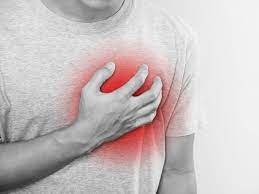Growing cancer rate conceals inequality between wealthy and poor countries: WHO
The World Health Organization’s cancer research department said on Thursday that there were a projected 20 million cancer diagnoses and 9.7 million cancer deaths in 2022. This is a rising burden of cancer that hides what the organization refers to as “striking inequity” between wealthy and poor nations.

According to a statement from the International Agency for Research on Cancer (IARC), one in five people will have cancer in their lifetime; one in nine males and one in twelve women will pass away from the illness.
However, the IARC said in its biannual study that the risk of cancer varies according to a patient’s location. The analysis is based on data from 185 nations and 36 malignancies.
In the most developed nations, for instance, one in twelve women may acquire breast cancer over their lifetime, but only one in seventy-one will pass away from it.
Because to a lesser exposure to risk factors such as being overweight, one in 27 women in countries with lower human development indices acquire breast cancer; yet, one in 48 women pass away from the disease. This is partly due to younger populations in these nations.
Women “are less likely to be diagnosed… in these countries.”
However, because of delayed diagnosis and insufficient access to high-quality treatment, individuals have a significantly increased chance of passing away from the illness, according to Isabelle Soerjomataram, deputy director of the IARC’s cancer surveillance section.
The IARC said that as people’s lives change, new forms of cancer are now impacting populations more often. For instance, colorectal cancer ranks second in terms of fatalities and is now the third most frequent cancer. Particular risk factors for colorectal cancer include advanced age, obesity, smoking, and alcohol use.
But with 2.5 million new cases and 1.8 million fatalities yearly, lung cancer has also resurfaced as the most frequent disease and the leading cause of death. According to IARC, this was probably related to Asia’s long-term tobacco consumption.
The organization said in a news conference that while COVID-19-related limitations affected cancer diagnosis and treatment, the evidence to yet, which is mostly from high-income nations, only reveals a slight effect on survival.
According to IARC, as the population ages and expands, there will probably be a 77% rise in cases by 2050, reaching 35 million. However, the effects would not be felt equally: the agency predicted that death rates would treble and cases would increase by 142% in poorer nations.






